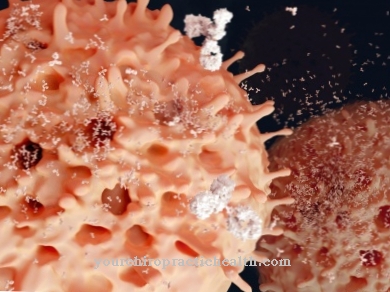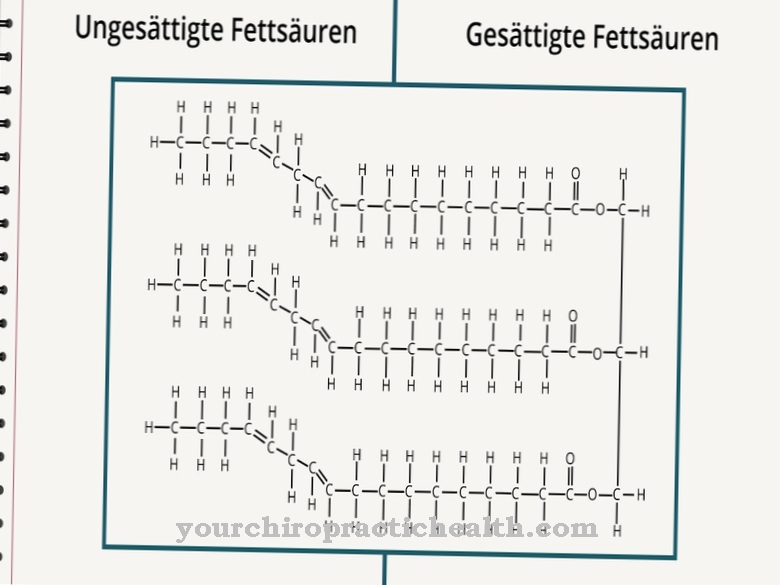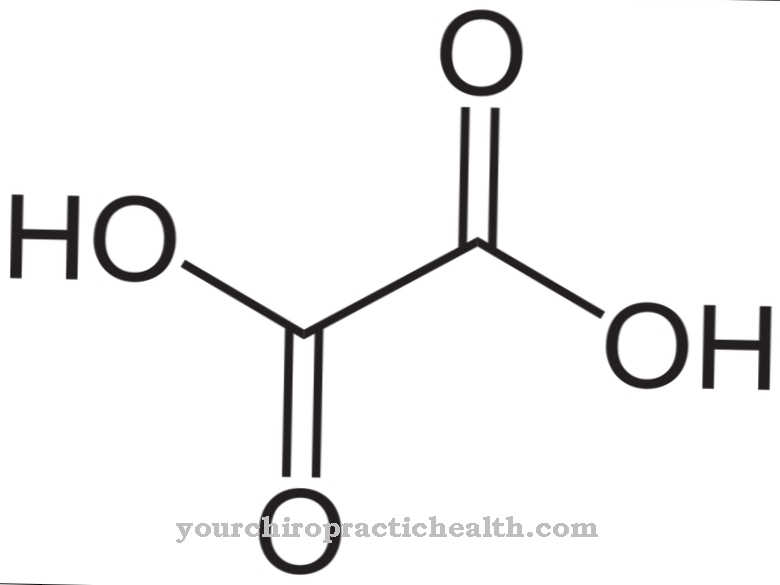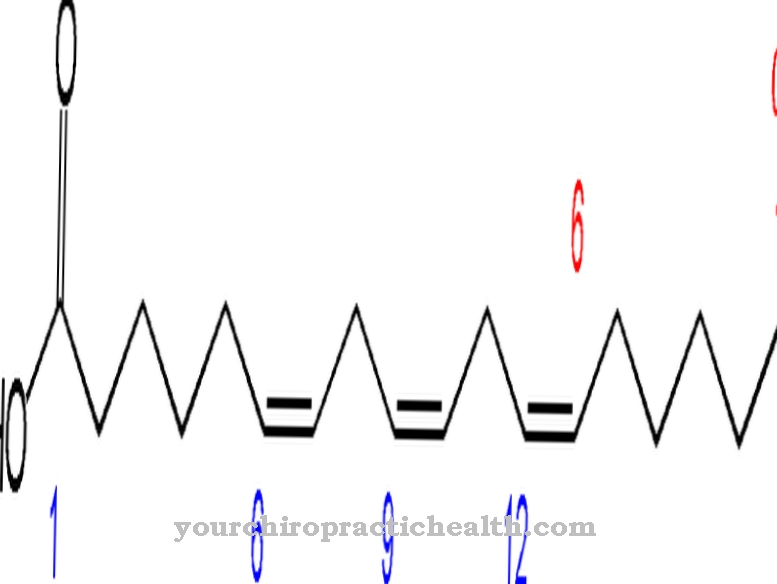Enterocytes are cells of the intestinal mucosa. They take on numerous functions in digestion and also play a role in the immune system.
What are enterocytes?
The name enterocyte comes from the Greek. In German the enterocyte is also called Hem cell designated. This type of cell is the most common type of cell in the small intestine.
There it is responsible for the absorption of various substances and substances from food. Enterocytes are also found in reduced numbers in the large intestine. The intestinal cells get their energy from butyrate, which is produced by probiotics.
Function, effect & tasks
The small intestinal cells take on many different functions. One of their main tasks is the absorption of small-molecule components of food. These include sugars, fats, fatty acids, amino acids and vitamins. They are also involved in the active ion transport of, for example, sodium, potassium, calcium, magnesium and iron.
Via the enterocytes, these food components first reach the mucosal cells of the intestine and from there into the blood of the portal vein. This transports the nutrient components to the liver. Fats, on the other hand, are supplied directly to the lymph by the mucosa cells. The transport of substances in the intestine can be active or passive. With passive resorption, the nutrients get from the place of high concentration to the place of low concentration by means of osmosis.
If there is no concentration gradient or if a substance is to be transported against the concentration gradient, active absorption is necessary. The enterocytes have numerous membrane proteins for this active absorption. These can then transport substances using ATP.
The enterocytes also serve to absorb water in the small intestine. In the small intestine, around 80 percent of the water is removed from the chyme. A large part of the fluid comes from the digestive juices from the stomach and pancreas. In this way, around seven liters of fluid are recovered in the small and large intestines every day.
The enterocytes are also part of the enterohepatic cycle. The enterohepatic cycle is used to recover bile acids. These are produced by the liver and play an important role in fat digestion. In the small intestine, the bile acids are reabsorbed by the enterocytes and brought to the liver via the portal vein. Here the bile acids are then "recycled".
Enterocytes also play an important role in immune defense. They produce immunoglobulins. Immunoglobulins are antibodies. Type A (IgA) immunoglobulins in particular are produced in the enterocytes. IgA develop their immune function mainly in secretions such as saliva, breast milk, in the intestinal secretion or in the urogenital secretion. There they serve to ward off pathogens.
Education, occurrence, properties & optimal values
Enterocytes are mainly found in the small intestine. The intestinal lining of the small intestine consists of three layers. Inside the intestine there is a single layer of columnar epithelium. This part of the intestinal mucosa is also known as the lamina epithelialis mucosae. This is followed by a very thin layer of connective tissue (lamina propria mucosae) and a fine layer of muscles. This is also called the lamina muscularis mucosae.
The intestinal mucous membrane does not line the intestine smoothly, but is folded to enlarge the surface. The mucosa and submucosa form folds up to one centimeter high. Those hot Kerckring wrinkles. But not only the Kerckring folds, also the villi and the microvilli of the intestinal mucosa contribute to the surface enlargement. Microvilli are small protuberances on the enterocyte cell membrane. The enterocytes line the lumen of the intestine closely together. The intestinal cells are connected to one another by so-called tight junctions. This tight cementation of the enterocytes serves as an intestinal barrier. They are also surrounded by a 500 nm thick glycoprotein structure.
This is known under the term glycocalyx. The enterocyte membrane contains proteins that are required for the active transport of food components. Enterocytes feed themselves to a large extent on butyrate. This is produced by probiotics in the gut. A diet rich in fiber serves as a nutrient for the good intestinal bacteria. Such a diet thus has an indirect positive effect on the enterocytes.
Diseases & Disorders
As already mentioned, the enterocytes sit very close together due to the tight junctions and thus serve as an intestinal barrier. The tight junctions can be impaired by various disruptive factors, however, so that the intestinal epithelium becomes permeable to allergens, pathogens and pollutants.
Such disruptive factors are, for example, stress, alcohol, medication or toxins from bacteria. When pollutants and pathogens pass from the intestinal lumen into the bloodstream, various symptoms can arise. The clinical picture is called leaky gut syndrome.
Antigens can enter the intestinal mucosa in an uncontrolled manner through the gaps in the barrier. This sets numerous immune processes in motion. The increased antibody formation can lead to sensitization to food components. In addition, inflammation mediators cause further damage to the intestinal mucosa. This starts a real vicious circle. The consequences of leaky gut syndrome are inflammation of the intestine, insufficient absorption of nutrients or autoimmune reactions.
Enterocytes are also affected in enteritis. Enteritis is an inflammatory disease of the small intestine. Around a third of all infectious bowel diseases are caused by viruses such as rotaviruses or noroviruses. But bacteria or fungi can also cause intestinal inflammation. The pathogens enter the intestinal mucosa via the enterocytes and cause an inflammatory reaction there. A large number of enterocytes are destroyed by the immune cells.
Typical symptoms of such an infection are diarrhea combined with nausea and vomiting. Intestinal cramps or even fever can occur. Most infectious bowel diseases usually heal within a few days without complications.












.jpg)



.jpg)










.jpg)
